Forums
- Forums
- Duggy's Reference Hangar
- RAF Library
- Hawker Tempest II
Hawker Tempest II
Post a reply
- Go to Previous topic
- Go to Next topic
- Go to Welcome
- Go to Introduce Yourself
- Go to General Discussion
- Go to Screenshots, Images and Videos
- Go to Off topic
- Go to Works in Progress
- Go to Skinning Tips / Tutorials
- Go to Skin Requests
- Go to IJAAF Library
- Go to Luftwaffe Library
- Go to RAF Library
- Go to USAAF / USN Library
- Go to Misc Library
- Go to The Ops Room
- Go to Made in Germany
- Go to Campaigns and Missions
- Go to Works in Progress
- Go to Juri's Air-Raid Shelter
- Go to Campaigns and Missions
- Go to Works in Progress
- Go to Skinpacks
- Go to External Projects Discussion
- Go to Books & Resources
-
4 years agoMon Nov 08 2021, 11:44amDuggy
 Main AdminAs a result of the termination of the Tornado project, Sydney Camm and his design team transferred the alternative engine proposals for the Tornado to the more advanced Tempest.Thus, it was designed from the outset to use the Bristol Centaurus 18 cylinder radial engine as an alternative to the liquid cooled engines which were also proposed. A pair of Centaurus-powered Tempest II prototypes were completed. Apart from the new engine and cowling, the Tempest II prototypes were similar to early series Tempest Vs. The Centaurus engine was closely cowled and the exhaust stacks grouped behind and to either side of the engine: to the rear were air outlets with automatic sliding "gills". The carburettor air intakes were in the inner leading edges of both wings, an oil cooler and air intake were present in the inner starboard wing. The engine installation owed much to examinations of a captured Focke-Wulf Fw 190, and was clean and effective.
Main AdminAs a result of the termination of the Tornado project, Sydney Camm and his design team transferred the alternative engine proposals for the Tornado to the more advanced Tempest.Thus, it was designed from the outset to use the Bristol Centaurus 18 cylinder radial engine as an alternative to the liquid cooled engines which were also proposed. A pair of Centaurus-powered Tempest II prototypes were completed. Apart from the new engine and cowling, the Tempest II prototypes were similar to early series Tempest Vs. The Centaurus engine was closely cowled and the exhaust stacks grouped behind and to either side of the engine: to the rear were air outlets with automatic sliding "gills". The carburettor air intakes were in the inner leading edges of both wings, an oil cooler and air intake were present in the inner starboard wing. The engine installation owed much to examinations of a captured Focke-Wulf Fw 190, and was clean and effective.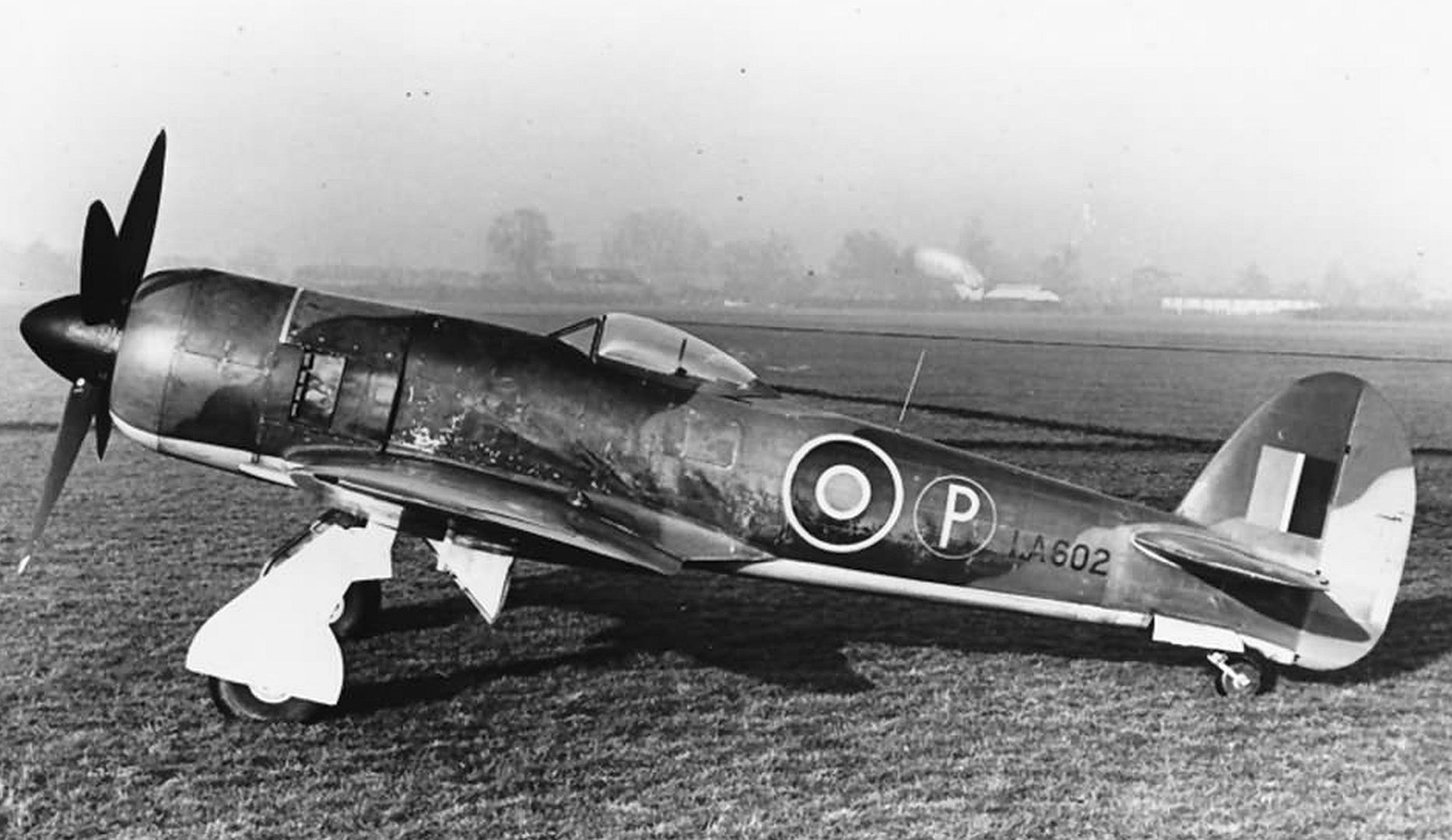


On 28 June 1943, the first Tempest II, LA602, flew powered by a Centaurus IV (2,520 hp/1,879 kW) driving a four-blade propeller. LA602 initially flew with a Typhoon-type fin and rudder unit. This was followed by the second, LA607, which was completed with the enlarged dorsal fin and first flew on 18 September 1943: LA607 was assigned to engine development.The first major problem experienced during the first few flights was serious engine vibrations, which were cured by replacing the rigid, eight-point engine mountings with six-point rubber-packed shock mounts. In a further attempt to alleviate engine vibration, the four blade propeller was replaced with a five blade unit; eventually, a finely balanced four bladed unit was settled on. Problems were also experienced with engine overheating, poor crankshaft lubrication, exhaust malfunctions and reduction-gear seizures. Because of these problems, and because of the decision to "tropicalise" all Tempest IIs for service in the South-East Asian theatre, production was delayed.
Orders had been placed as early as September 1942 for 500 Tempest IIs to be built by Gloster but in 1943, because of priority being given to the Typhoon, a production contract of 330 Tempest IIs was allocated instead to Bristol, while Hawker were to build 1,800. This switch delayed production even more.On 4 October 1944, the first Tempest II was rolled off the line; the first six production aircraft soon joined the two prototypes for extensive trials and tests.With the end of the Second World War in sight, orders for the Tempest II were trimmed or cancelled; after 50 Tempest IIs had been built at Bristol's Banwell facility, production was stopped and shifted back to Hawker, which built a total of 402, in two production batches: 100 were built as fighters, and 302 were built as fighter-bombers (FB II) with reinforced wings and wing racks capable of carrying bombs of up to 1,000 lb.
Physically, the Tempest II was longer than the Tempest Mk.V (34 ft 5 in/10.5 m versus 33 ft 8 in/10.3 m) and 3 in (76 mm) lower. The weight of the heavier Centaurus engine (2,695 lb/1,222 kg versus 2,360 lb/1,070 kg) was offset by the absence of a heavy radiator unit, so that the Tempest II was only some 20 lb (9 kg) heavier overall. Performance was improved; maximum speed was 442 mph (711 km/h) at 15,200 ft (4,633 m) and climb rate to the same altitude took four and a half minutes compared with five minutes for the Tempest Mk.V; the service ceiling was also increased to 37,500 ft (11,430 m).
Tropicalising measures included the installation of an air filter and intake in the upper forward fuselage, just behind the engine cowling, and the replacement of the L-shaped pitot head under the outer port wing by a straight rod projecting from the port outer wing leading edge. All production aircraft were powered by a (2,590 hp/1,932 kW) Centaurus V driving a 12 ft 9 inch (3.89 m) diameter Rotol propeller.Tempest IIs produced during the war were intended for combat against Japan and would have formed part of Tiger Force, a proposed British Commonwealth long-range bomber force based on Okinawa. The Pacific War ended before they could be deployed.
89 Tempest FB.IIs were passed on from the RAF to the Indian Air Force in 1947, while another 24 were passed on to the Pakistani Air Force.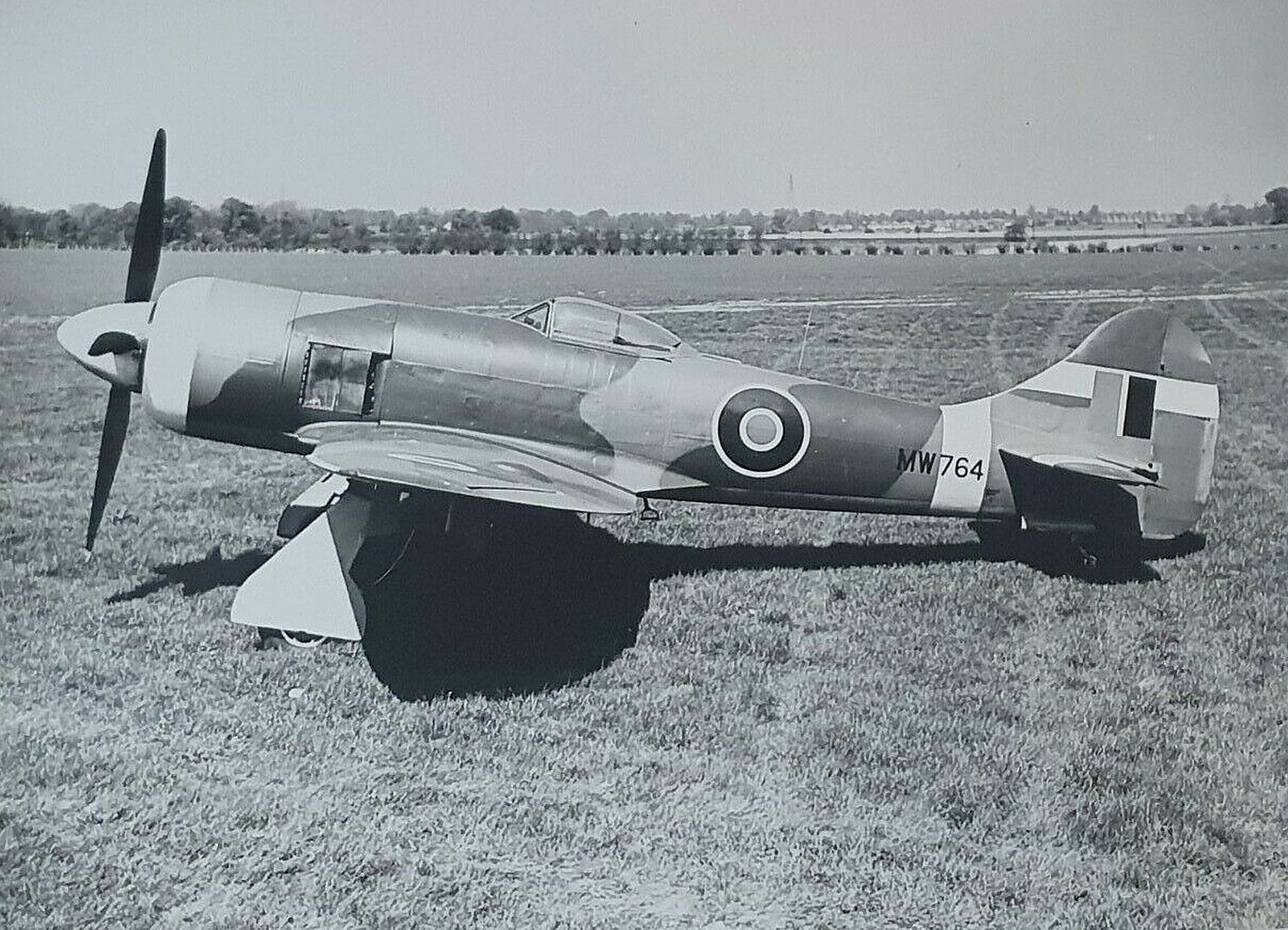
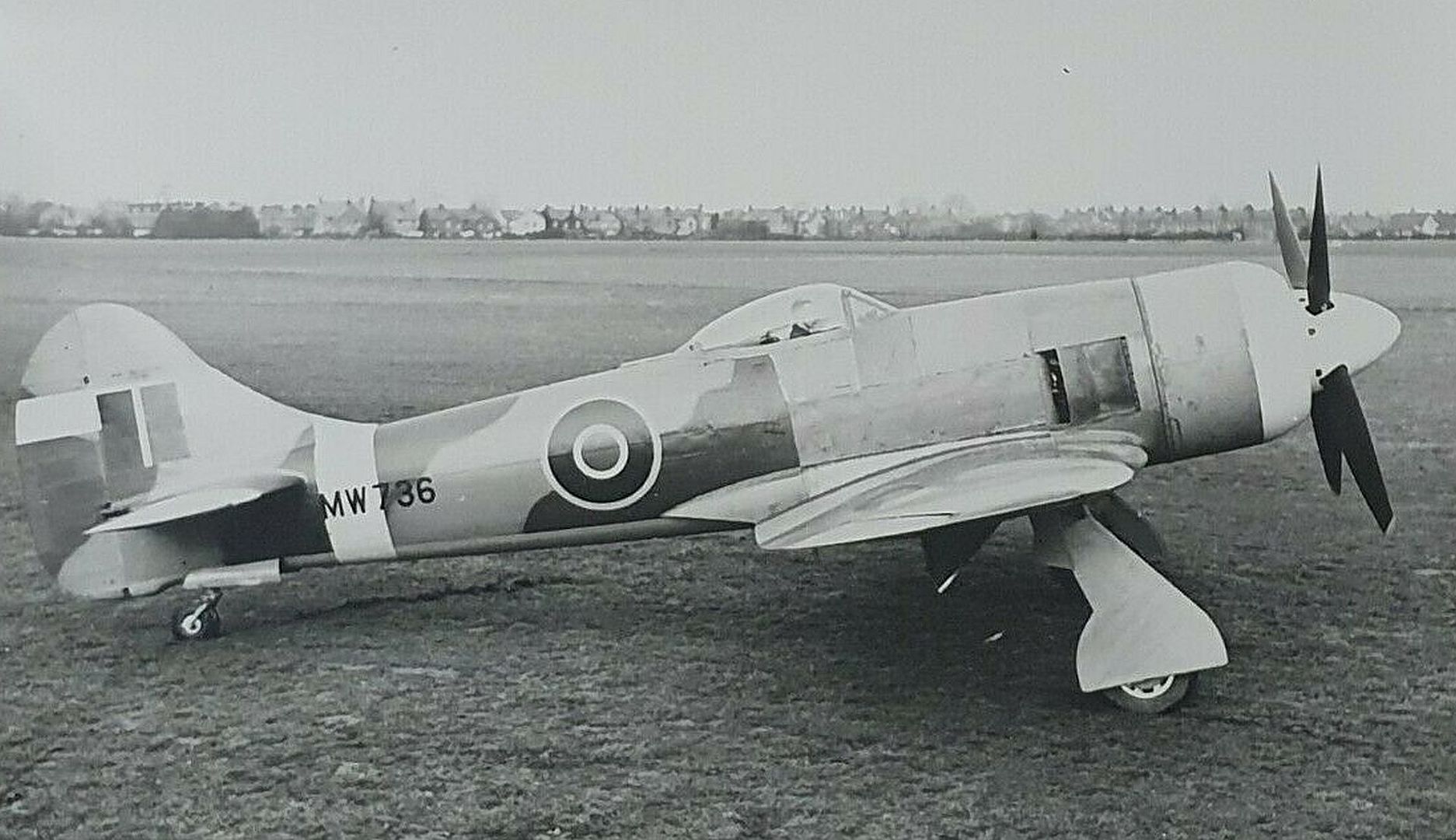

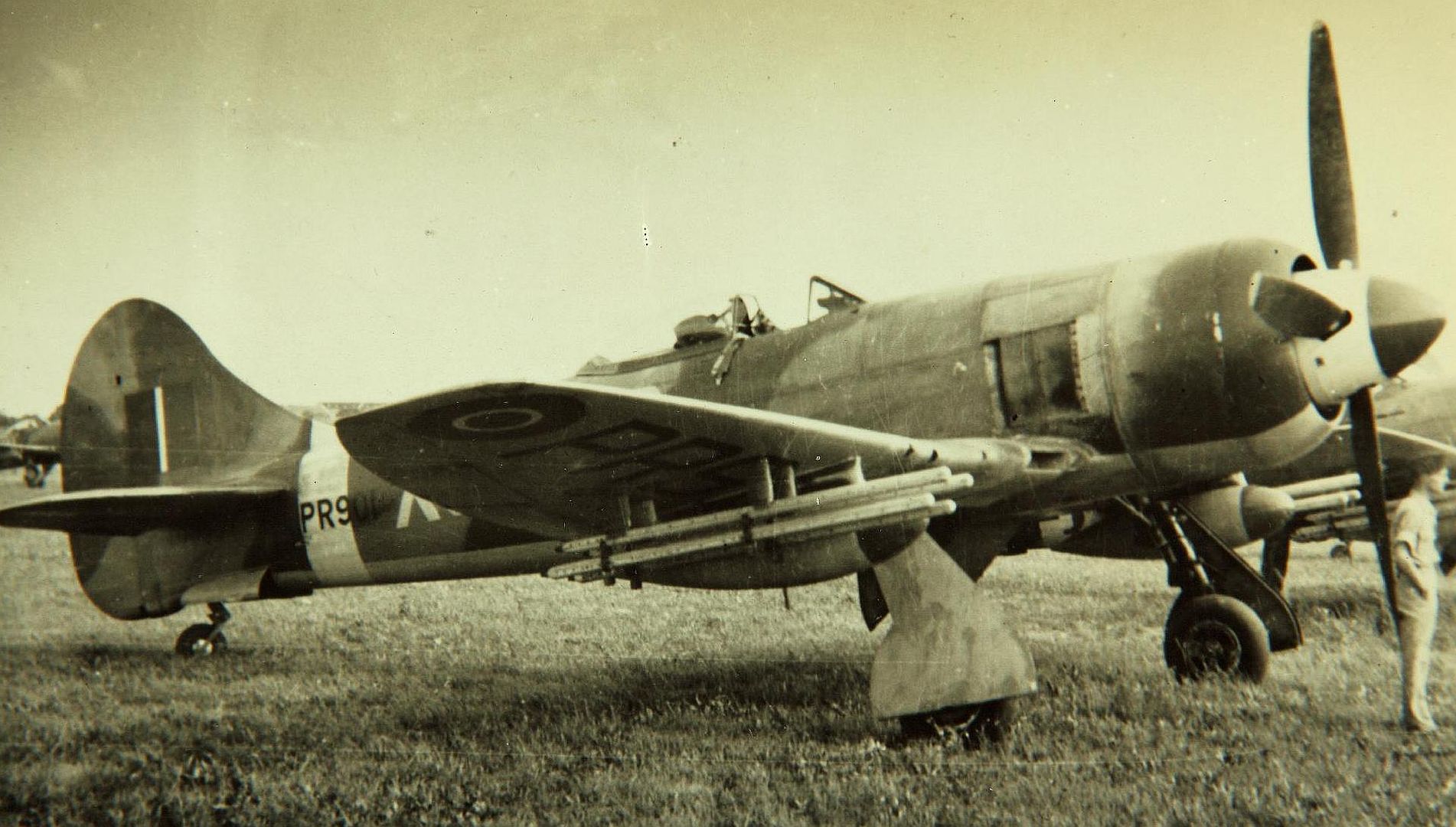

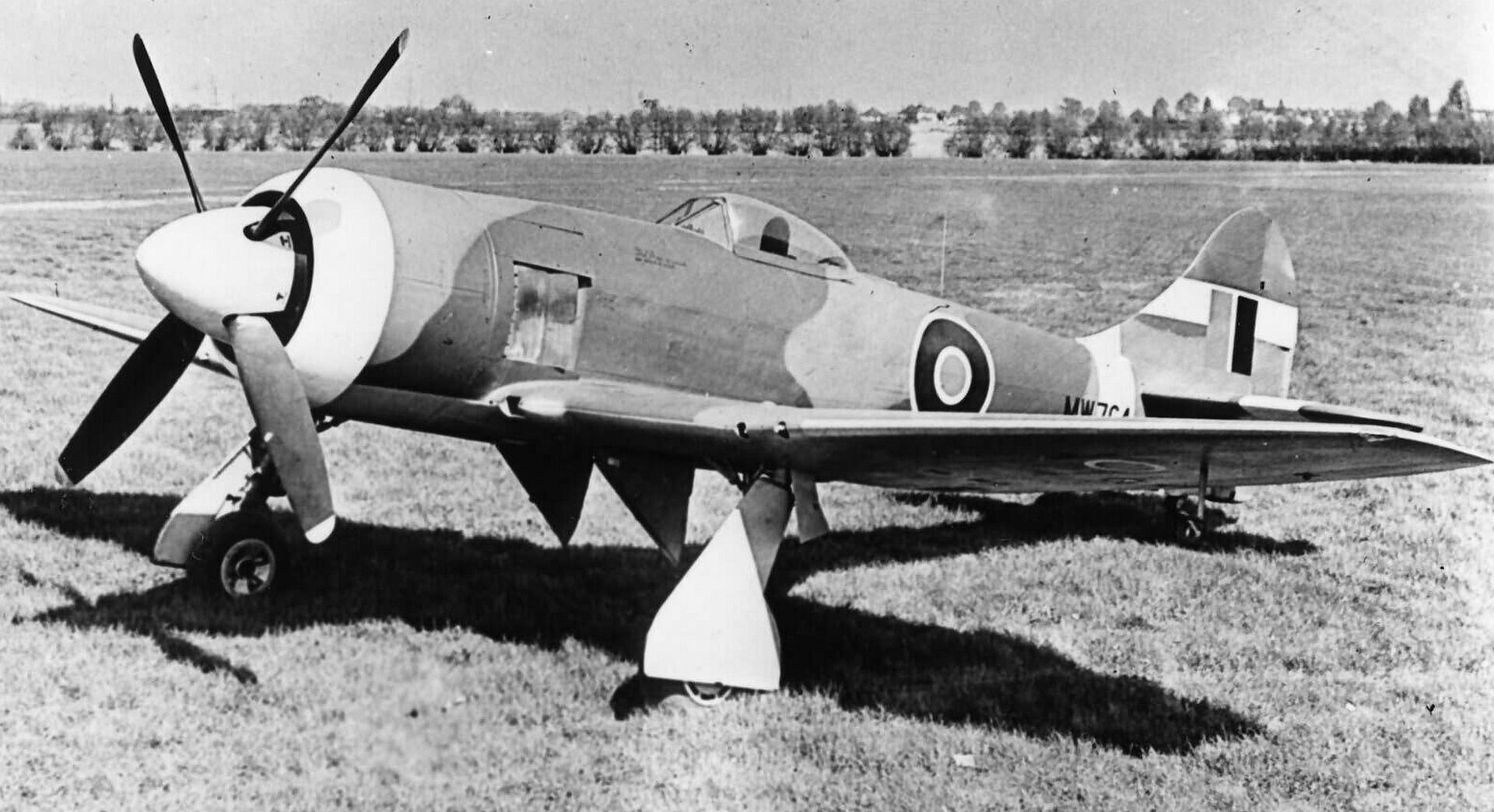

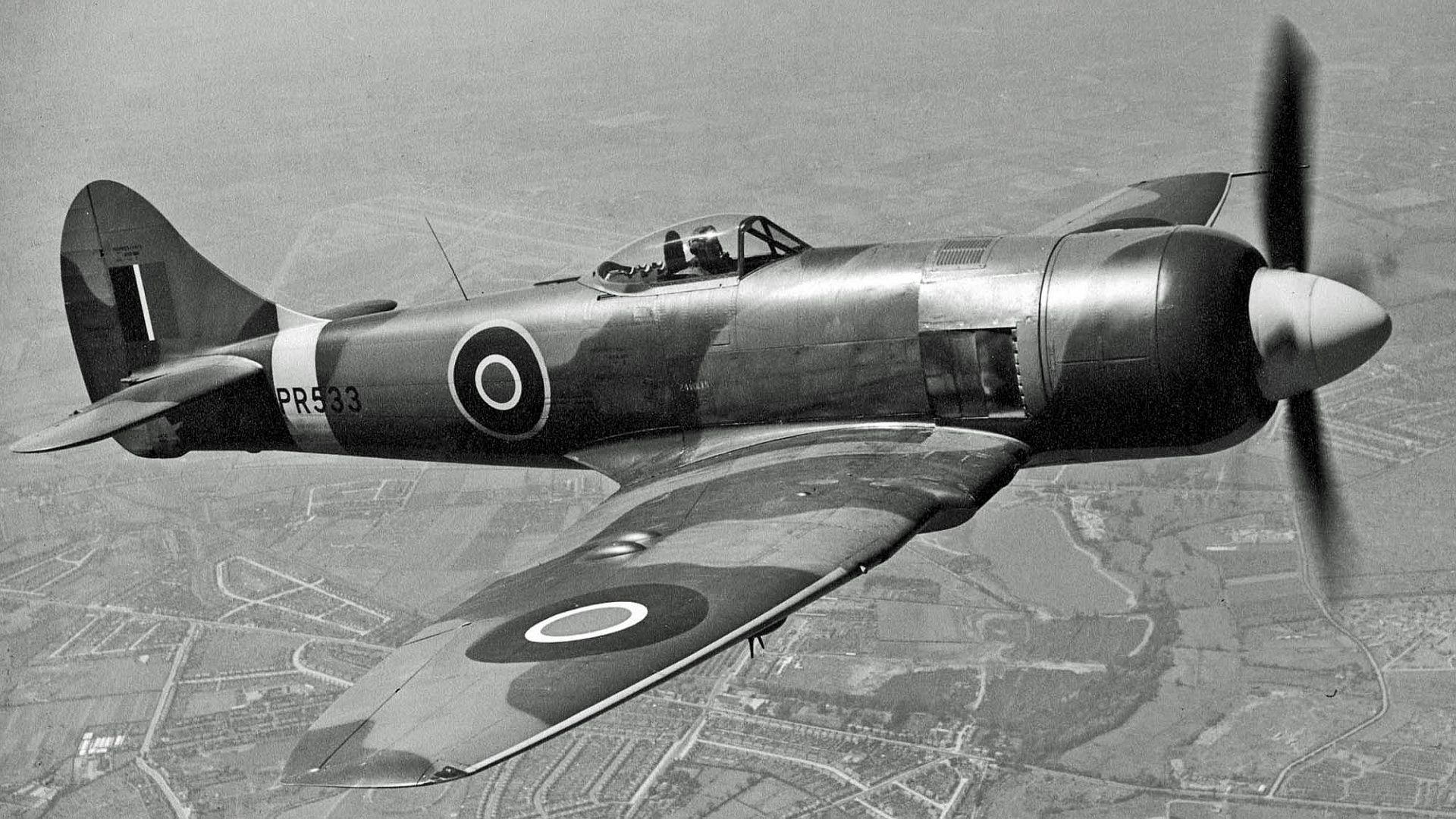

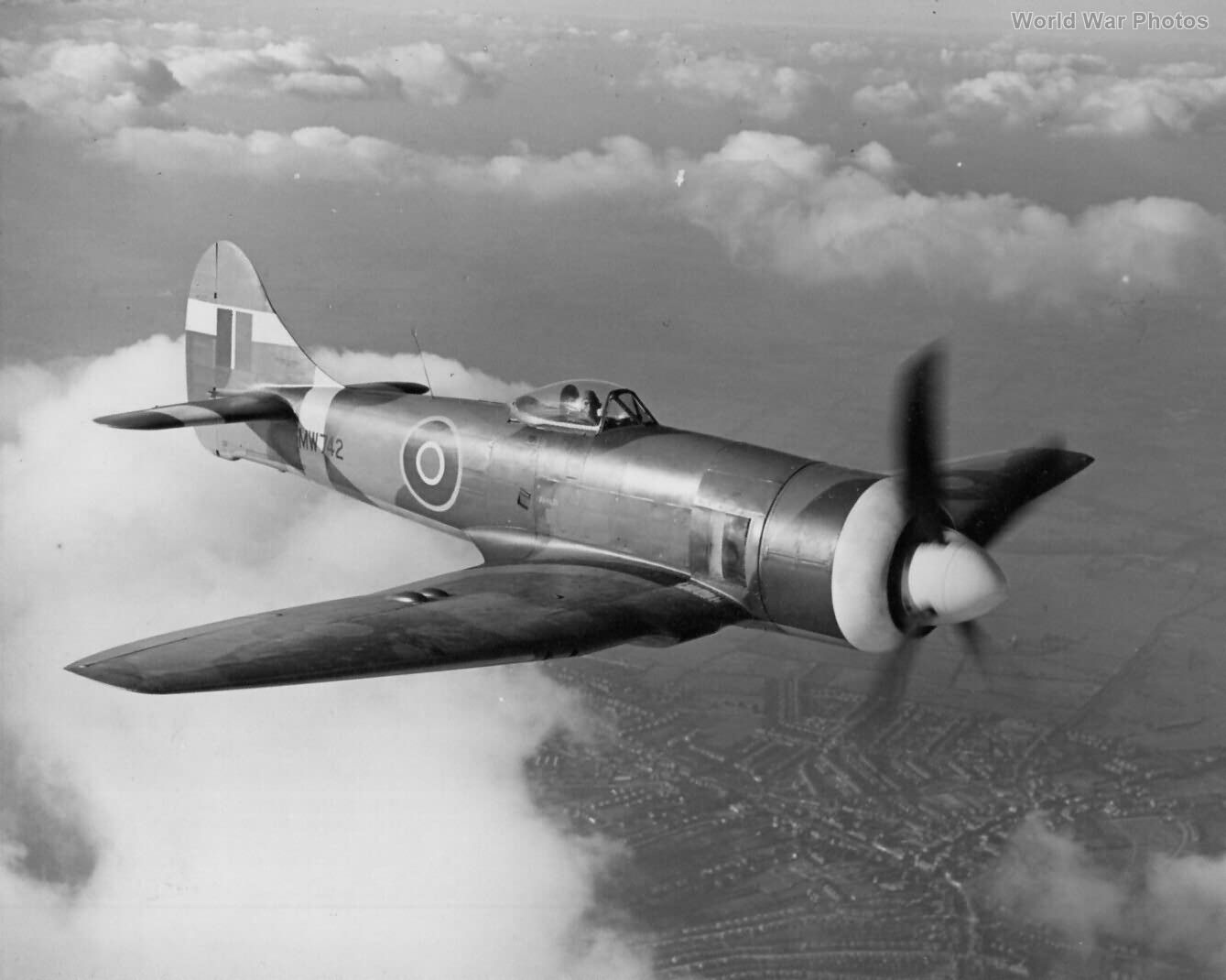
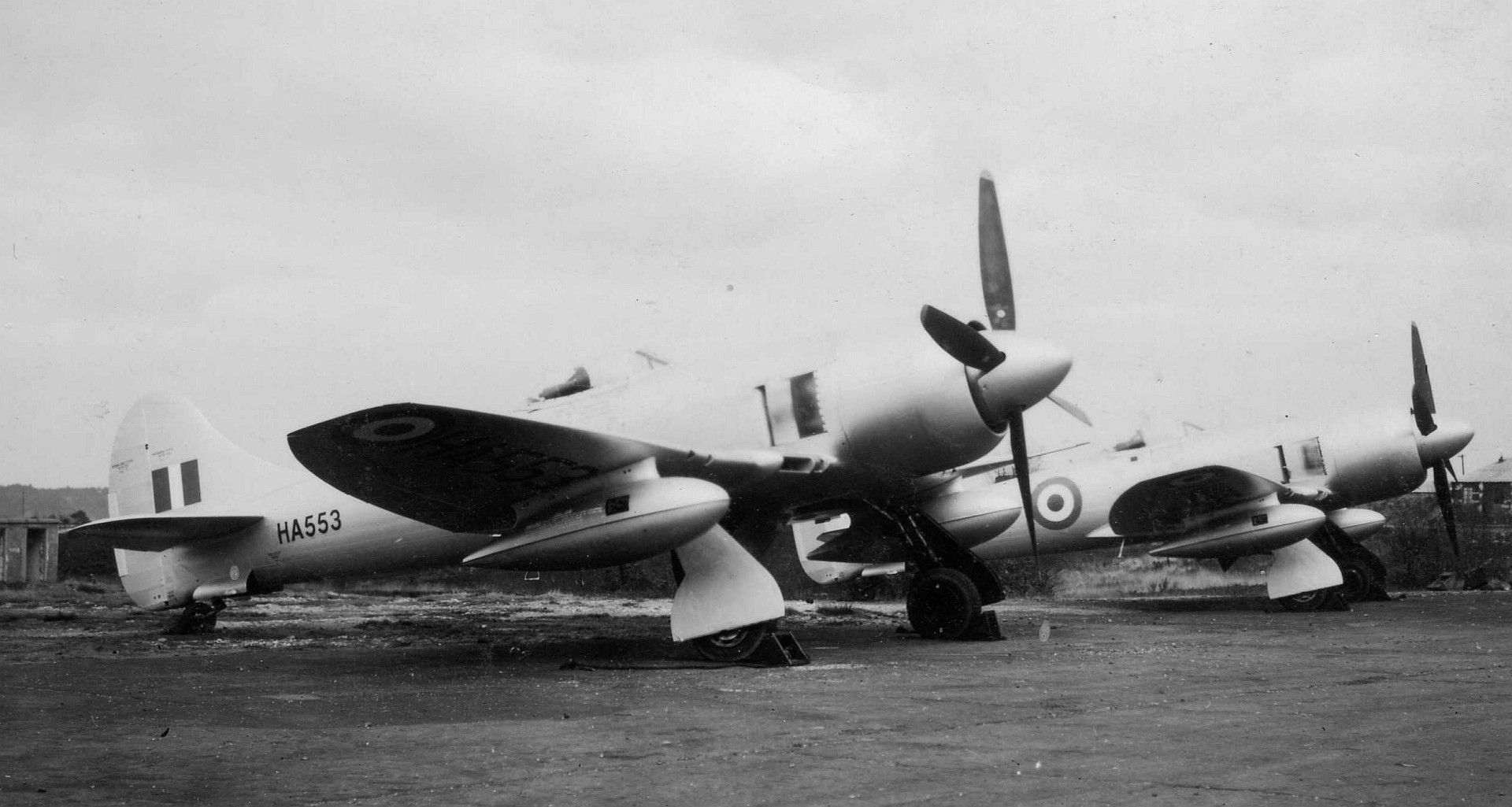
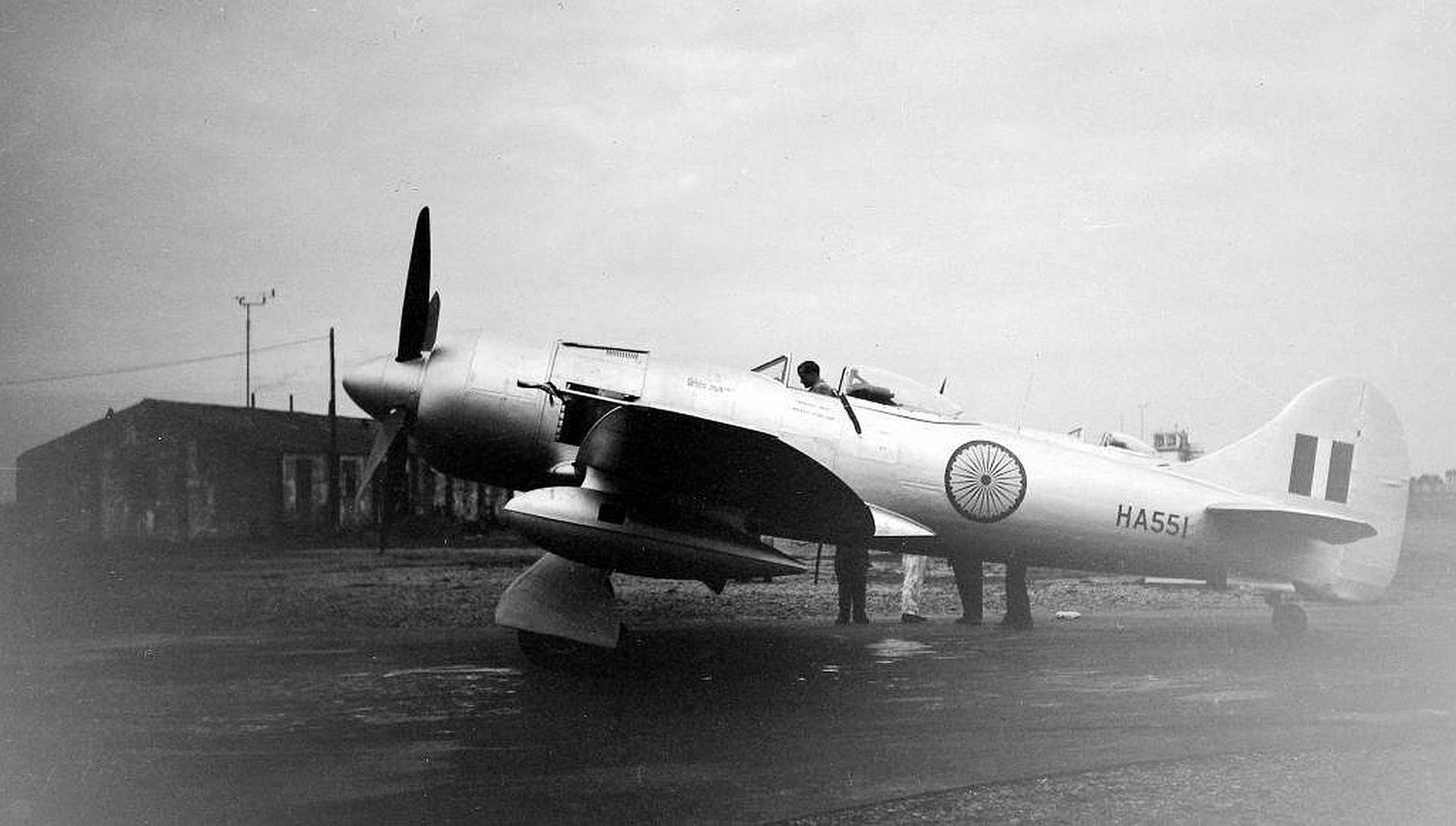
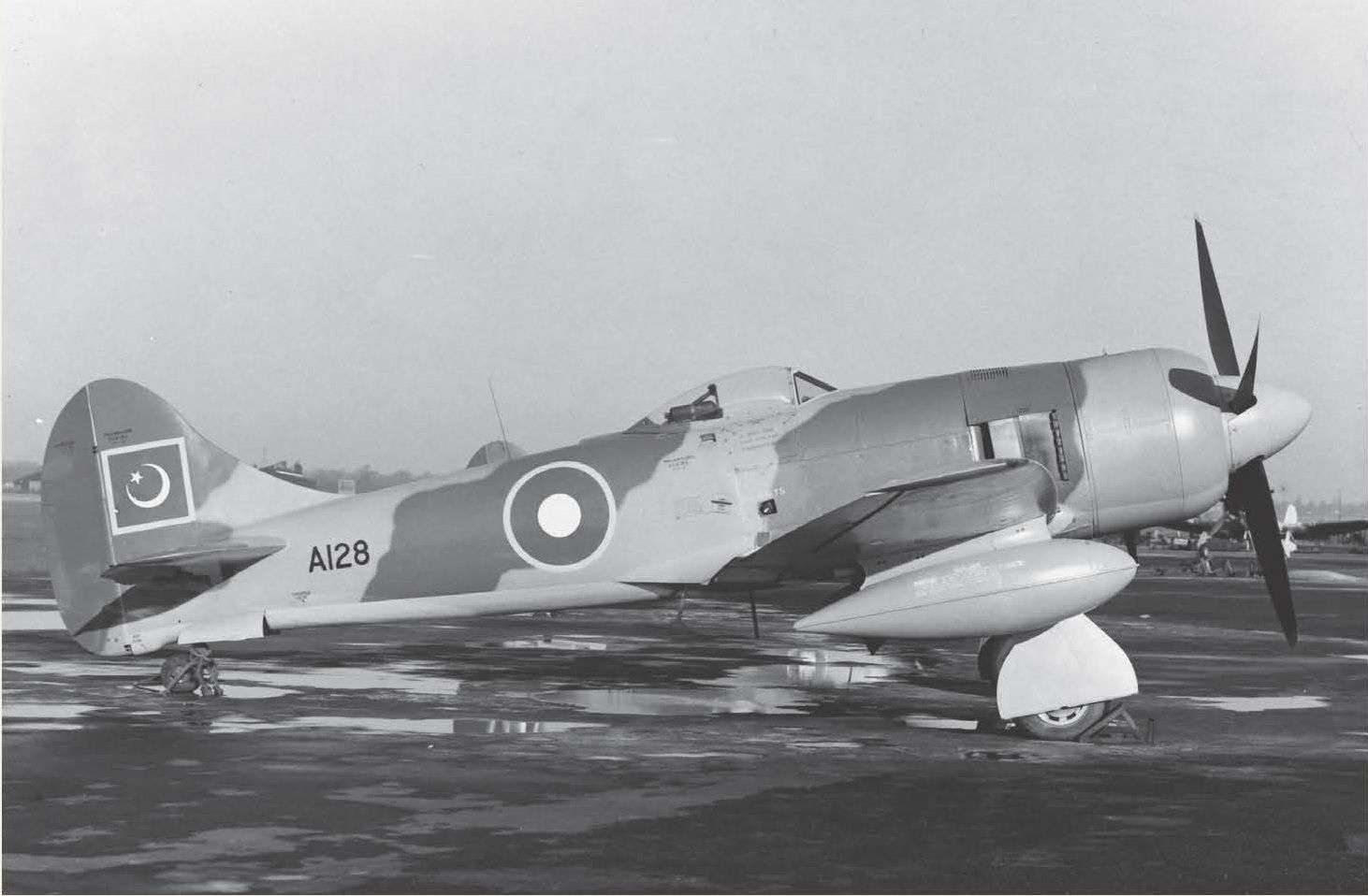
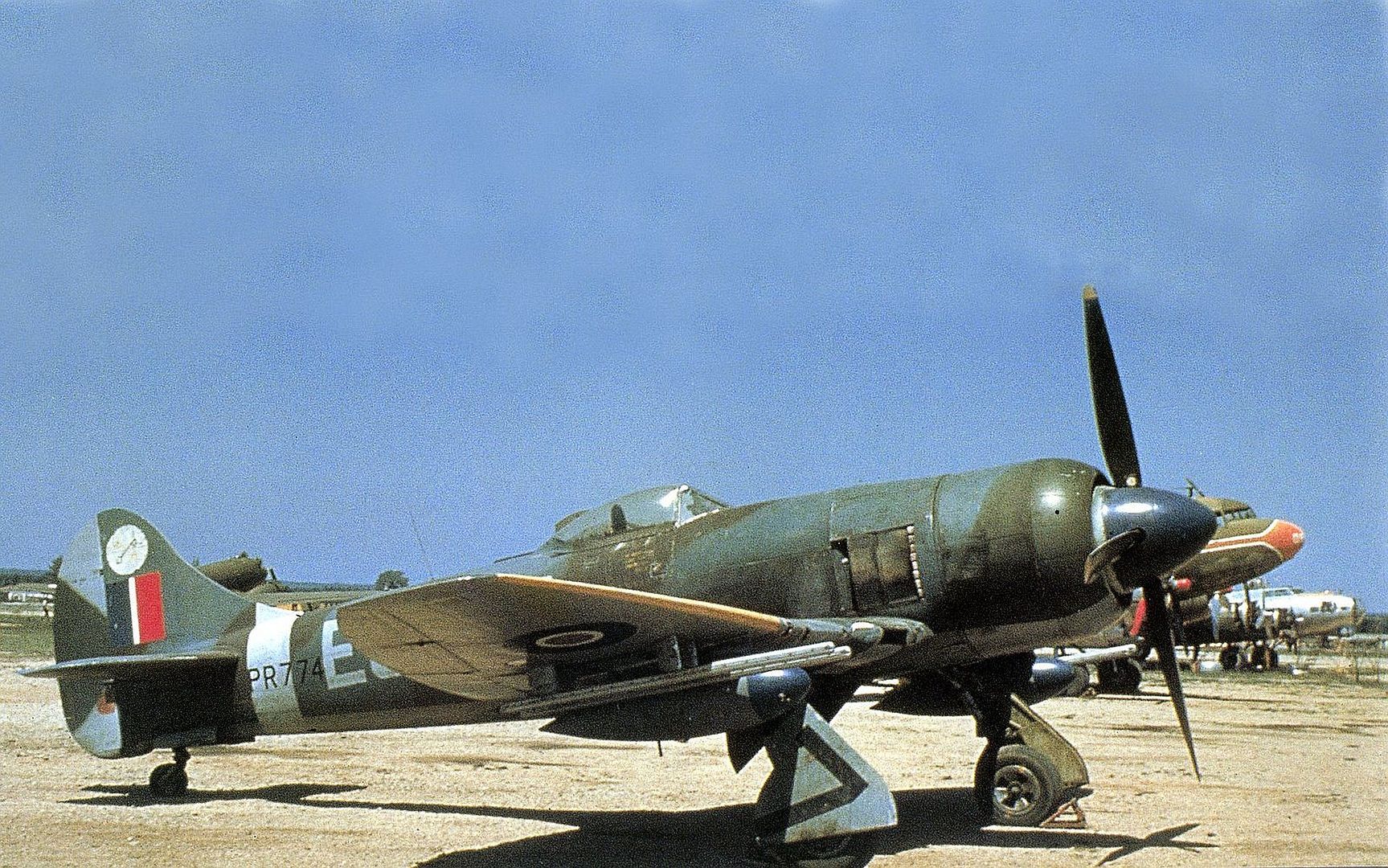

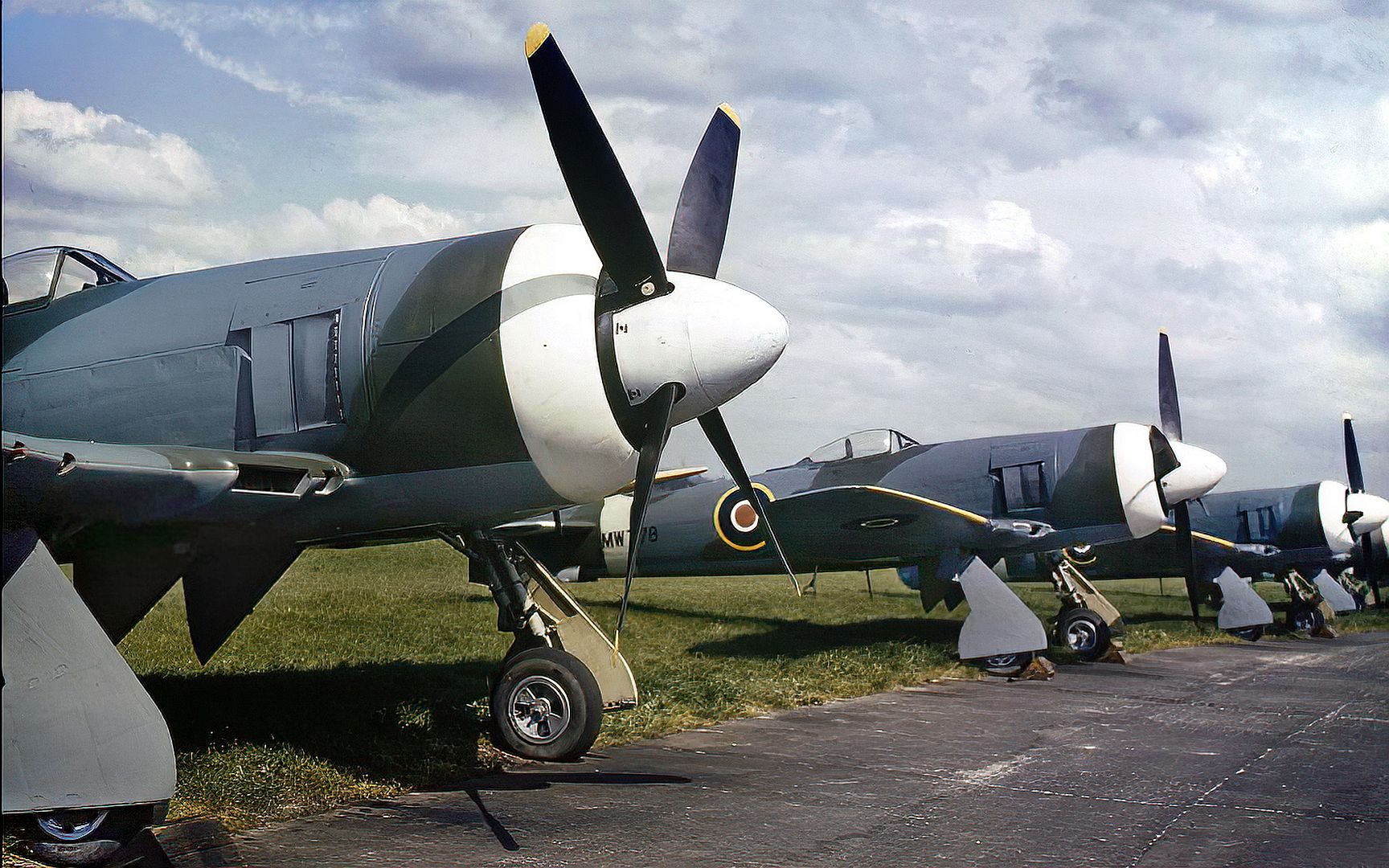
Wing span: 41ft 0in
Wing area: 302 sq ft
Length: 34ft 5in
Height (tail down): 14ft 6in
Weight (empty): 8,900lb
Weight (loaded): 11,800lb
Maximum speed: 442 mph at 15,200ft
Time to height: 4.5 mins to 15,000ft
Powerplant: Bristol Centaurus Mk V
Max power: 2,520hp
Propeller diameter: 4-blade 12ft 9in
Numbers built: 452
Post a reply
- Go to Previous topic
- Go to Next topic
- Go to Welcome
- Go to Introduce Yourself
- Go to General Discussion
- Go to Screenshots, Images and Videos
- Go to Off topic
- Go to Works in Progress
- Go to Skinning Tips / Tutorials
- Go to Skin Requests
- Go to IJAAF Library
- Go to Luftwaffe Library
- Go to RAF Library
- Go to USAAF / USN Library
- Go to Misc Library
- Go to The Ops Room
- Go to Made in Germany
- Go to Campaigns and Missions
- Go to Works in Progress
- Go to Juri's Air-Raid Shelter
- Go to Campaigns and Missions
- Go to Works in Progress
- Go to Skinpacks
- Go to External Projects Discussion
- Go to Books & Resources
